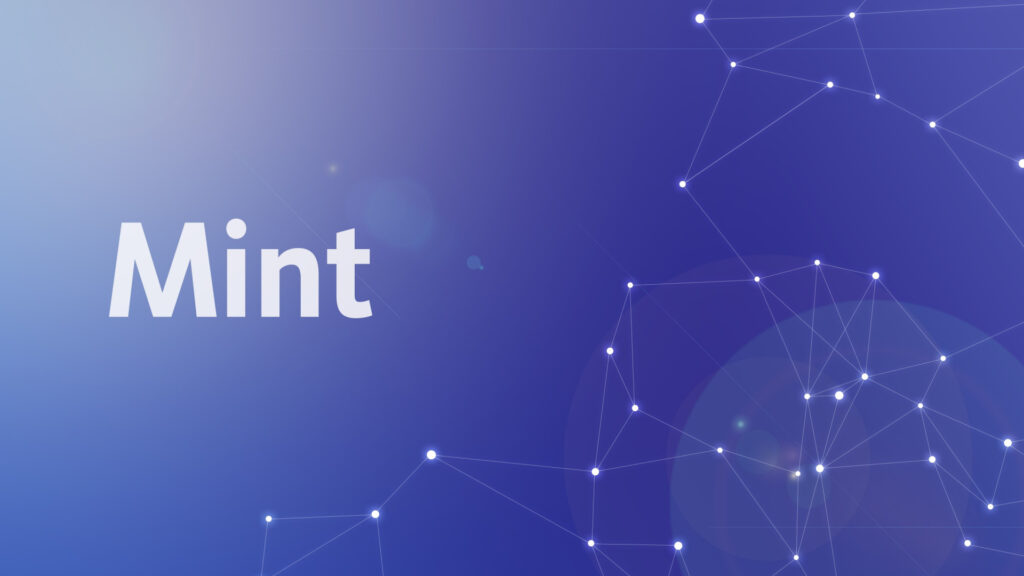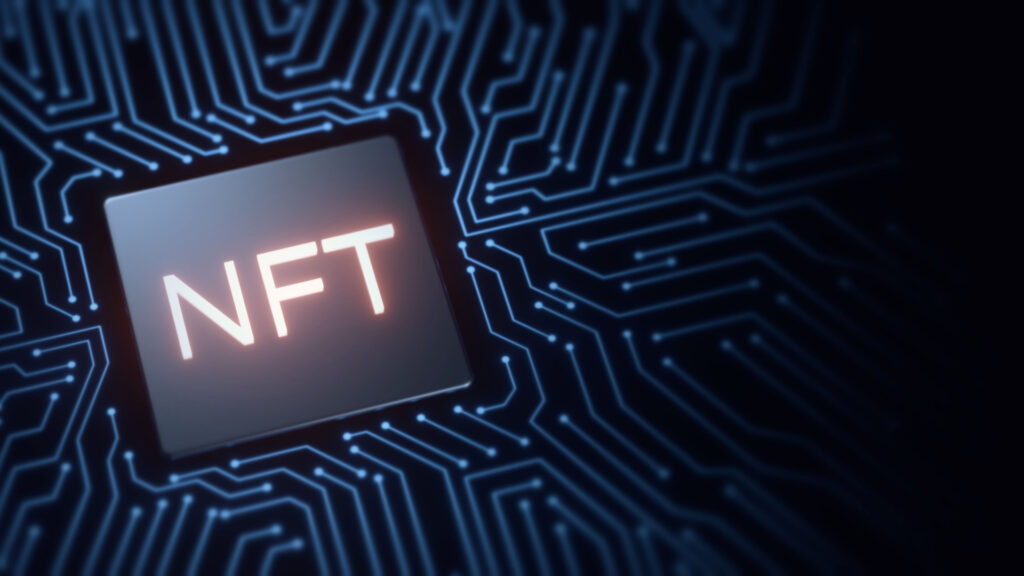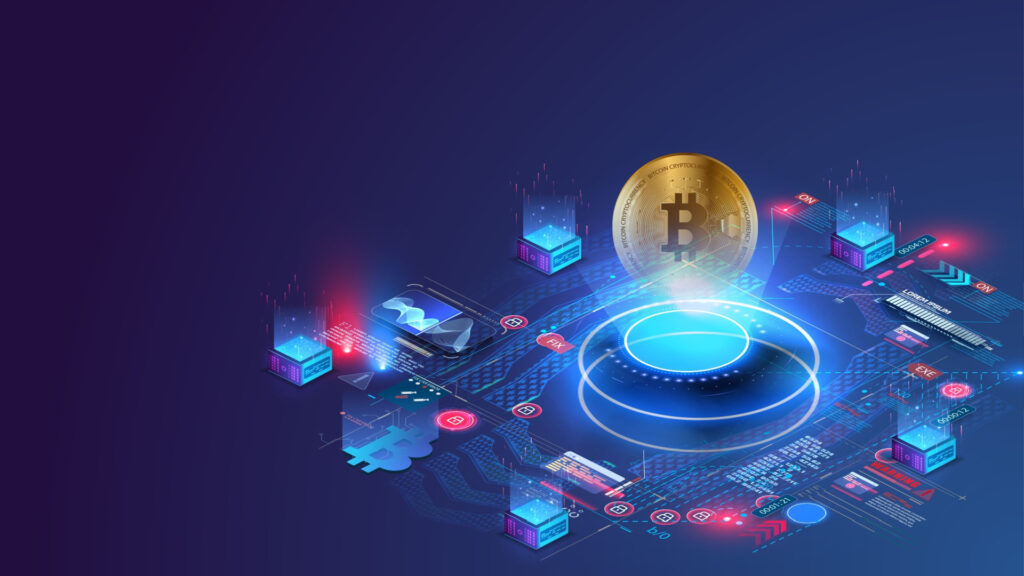The cryptocurrency market has been experiencing incredible growth in recent years, and coins are becoming more expensive. Simultaneously, cryptocurrency trading and investing are gaining popularity among entrepreneurs, investors, and ordinary people without business connections. This contributes to the emergence of new technologies and opportunities for flexible earnings in the crypto market - for example, crypto minting.
Introduction
For the first cryptocurrencies launched on the market, such as Bitcoin, Ethereum and Dogecoin, mining represented the only path to create new blocks on a blockchain. It relies on the Proof-of-Work algorithm and uses the computing power of a user's computer to solve a mathematical problem, that is, to find the hash, which is a unique code. Whoever discovers the correct hash code adds a new block to the blockchain and receives a reward.
However, the latest blockchain projects have started to abandon Proof-of-Work technology in favour of the Proof-of-Stake algorithm. Unlike its predecessor, it does not need expensive equipment for complex calculations, which causes huge energy costs (which is why mining is actively criticised worldwide). Still, simultaneously, it equally allows you to secure a passive income.
Proof-of-Stake is known as staking, minting, or forging (these are all terms for the same process), and new coins resulting from this algorithm are “minted.”
What is cryptocurrency minting?

Cryptocurrency minting produces new coins by authenticating data, creating new blocks, and writing information to the blockchain. Therefore, with minting, you can mint both new units of cryptocurrency and non-fungible tokens (NFT) in exchange for a reward.
This method is as follows: the user places a certain number of coins in an account and leaves them “in storage” for a certain period whilst new coins are generated. Therefore, there are no miners in the Proof-of-Stake algorithm, although there are validators. They are network users who provide the blockchain's functionalities by supporting the system operation with their stakes and minting their blocks. Namely, the participants of the cryptocurrency minting are the validators.
Crypto minting requires no extensive technical knowledge of the code. Instead, you will need to stake a certain number of tokens and hope you will, as a validator, be selected by the network to add a block. For example, on the Ethereum network, a potential validator needs to deposit only 32 ETH to be able to mint coins.
Suppose you do not have enough coins in your wallet to make a “deposit.” Providers could lend you the necessary cryptocurrency in exchange for stablecoins or other valuable assets if this is the case. With some cryptocurrencies, your chances of being selected for minting increase together with the number of coins you have.
It is also vital that the minting process is decentralised. Every user who creates new tokens and makes money is not dependent on central regulatory bodies or intermediaries. Instead, all functions are controlled and supplied exclusively by the user and the blockchain they use.
How does crypto minting work?
Crypto minting is designed to create new blocks in a cryptocurrency blockchain. As a result, users receive a certain percentage of the activity: their earnings. For example, if the total asset size is 1000 blocks and the user created 50 of them, they own 5% of the assets. Therefore, they are also entitled to 5% of total profits.
Let's take a closer look at what the minting process looks like in practice:
- The user deposits a particular number of coins.
- Then, they participate in minting (as a validator) and, alongside other validators, compete to add the next block to the digital registry – blockchain.
- The network picks one validator. This occurs based on numerous factors to ensure that no one can take full control over the process of creating new blocks. For example, a validator who has competed over a long time would not be given a chance to make a new block every time. So, instead, the network ensures that each participant gets an opportunity to create their own block and receive rewards.
- After adding a new block to the blockchain, the validator receives a specific number of coins for their work.
- To verify the transaction's validity, the network blocks the coins received by the validator for some time. They are unblocked after the network is satisfied that the transaction is not fraudulent.
Consequently, the attraction of minting for users lies in the fact that with its assistance, you can receive good earnings without investing huge amounts. However, it is a temporary phenomenon. In minting, as in the entire crypto market, it is impossible to guarantee constant and stable earnings.
Crypto minting vs crypto mining

Let's take a closer look at the fundamental differences between crypto minting and crypto mining.
First of all, crypto minting and mining work via different algorithms. In the case of cryptocurrency mining, the security of transactions depends on sophisticated encryption methods. Miners are rewarded for securing the network and validating transactions with cryptocurrency coins. It is important to note that the newly “mined” coins will go into circulation. All this is marked by the Proof-of-Work algorithm.
In turn, the basics of crypto minting depend on the Proof-of-Stake algorithm. It works to confirm cryptocurrency transactions through staking. This process involves crypto owners locking their existing assets to verify transactions and prove that they are valid.
One of the most interesting features of minting, which you will not find in the Proof-of-Work algorithm, is the random selection of users. This is because the minting participants with more coins are not always likely to be selected as validators to verify transactions.
However, there are more differences between the two ways of creating new blocks in the blockchain. For greater clarity, we present them in the form of a table:
| Algorithm | Proof-of-Work (PoW) | Proof-of-Stake (PoS) |
| Implementation Requirements | Expensive equipment for solving mathematical problems | Having a specific number of coins to participate in the minting process (conditions vary depending on the cryptocurrency) |
| Investments | Equipment and electricity costs | Costs solely for the purchase of coins |
| Risks | Equipment failure | There is a risk of blockchain manipulation by the owner of the largest stake in the system |
| Revenue | The participant is rewarded for using mathematical calculations to add a new block to the blockchain. At the same time, it is impossible to say who will find the right solution. Most frequently, miners unite. In this case, the reward is divided among all participants in accordance with the computing power of each user’s device | Revenue directly depends on the number of coins already available |
Minting in PLC Ultima
Let us find out how minting works using PLCU as an example.
PLC Ultima is a cryptocurrency created using blockchain technology and designed for online payments. The primary function of the coin is to provide easy access to cryptocurrencies. It can be used to purchase goods, pay for services, and create new PLCU coins.
- To get started and become a minting participant, a user should purchase an Ultima Minter digital certificate. It is designed to generate a passive income and indicates how many PLCUs you will earn each month (fixed income). So, the more certificates you buy, the more coins you will receive.
- Next, the user must install the Ultima Farm application specifically for minting PLCUX coins using smart contracts. The app is free and available for download in the iOS and Android stores.
- Then, the user needs to enter into a smart contract with the PLCU and freeze the coins in their account for a certain period. During this time, the user will receive minting transactions monthly. After a certain period of freezing, the coins will become available again.
Minting NFTs

NFT (Non-Fungible Tokens) means that every digital token on the network is unique. It contains a small amount of distinct data for a particular token. Therefore, NFTs are digital cryptographic assets. They are stored in the blockchain for online authentication and verification of ownership of physical assets, credentials, etc. But remember that NFTs are not media content repositories. They contain no digital content on the blockchain. For example, suppose a user buys an NFT of an image or song. They are actually getting a token with the URL of the purchase (song or image) hosted on a web server.
It isn't easy to gauge how long it takes to create an NFT. However, almost all NFT platforms, tools, and marketplaces make this process easier. First, to create an account or verify yourself on the main NFT trading platforms, you must install a Chrome browser extension called MetaMask and an Ethereum wallet.
The following methods of converting digital content to NFT, sending the file to markets, and advertising are akin to posting a video on YouTube, uploading music to Spotify, or selling goods on Amazon. The user needs to upload a file (it can be in different formats: PNG, JPG, GIF, MP3, or MP4), give it a title and subtitle, add a description, decide on royalties, and sell it. At first glance, everything seems fairly simple. However, let us take a closer look and explore how the main stages of NFT minting happen on one of the largest OpenSea sites:
1. Buying Ethereum (ETH).
Ethereum is the most widely used cryptocurrency after Bitcoin. First, though, to buy Ethereum, the user must open an account on one of their preferred trading platforms.
2. Creating a crypto wallet.
Once the user has purchased ETH coins, they must create a crypto wallet. Then, it can be used to sell and acquire NFTs.
3. Connecting the crypto wallet to OpenSea.
Following a few easy steps, the user will connect their newly created wallet to the OpenSea platform. To do this, you need to do the following:
- Download and open the MetaMask plugin in your browser.
- In the same browser, go to the OpenSea marketplace, select “Profile,” and accept all necessary requirements.
- To verify your account, enter your email address and username.
- Then, receive a confirmation email asking you to follow the link.
4. After completing all the steps, it is time to start creating your first NFT. You can begin with creating a “Collection.”
5. On the main page of the OpenSea website, you must click the “Create” button in the upper right-hand corner. There you can upload a digital file and give the NFT a name. Optional fields include a description, an external link to more information (website), and the blockchain where the NFT will be based. After entering your basic information, you can click “Finish”, and that’s it. You created your first NFT.
Pros and cons of minting

The advantages and disadvantages of cryptocurrency minting include the following features of this method:
| Pros | Cons |
| It doesn’t require expensive equipment. The minting process can run on any computing device (smartphone, PC) | You must initially have a certain amount of funds to start minting |
| Less energy- and resource-intensive method | 2. Income depends solely on the number of coins. The larger the investment, the bigger the income |
| It is eco-friendly, unlike the Proof-of-Work algorithm, which wastes a huge amount of energy | 3. There is a chance of network manipulation |
| Has a high transaction speed (can reach 100,000 per second). Mining, on the other hand, takes 10 minutes to form a block | 4. Risk of fraud |
Summarising the results of comparing the two algorithms (Proof-of-Work and Proof-of-Stake) and a detailed analysis of the minting process, we can highlight the following distinctive features:
- Minting is marked by significantly lower energy costs compared to mining. In addition, it is not the capacity of the equipment that is of key importance but the number of crypto coins available. So, minting can be distinguished by the relatively cheap cost of carrying it out.
- Simultaneously, when mining, the number of coins received depends solely on the equipment used. In minting, it depends on the initial number of coins belonging to the participant.
- Minting involves independence and a lack of responsible bodies. However, in this case, this is not just an advantage but also a disadvantage. Significant problems could occur in proving the ownership of the shares.
Therefore, generating cryptocurrency using block minting is still more profitable. This advantage can be obtained solely through your knowledge and ability to work with crypto. And as the acceptance of cryptocurrencies continues to gain momentum, the demand for new tokens and coins is growing significantly. Together with it, the influence of token and coin minting is growing.
Undoubtedly, cryptocurrency minting has significantly changed the crypto market and influenced the increase in energy efficiency and the speed of creating new cryptocurrencies. So, minting is paramount in developing new coins and has every opportunity, in the end, to bypass mining on all fronts.